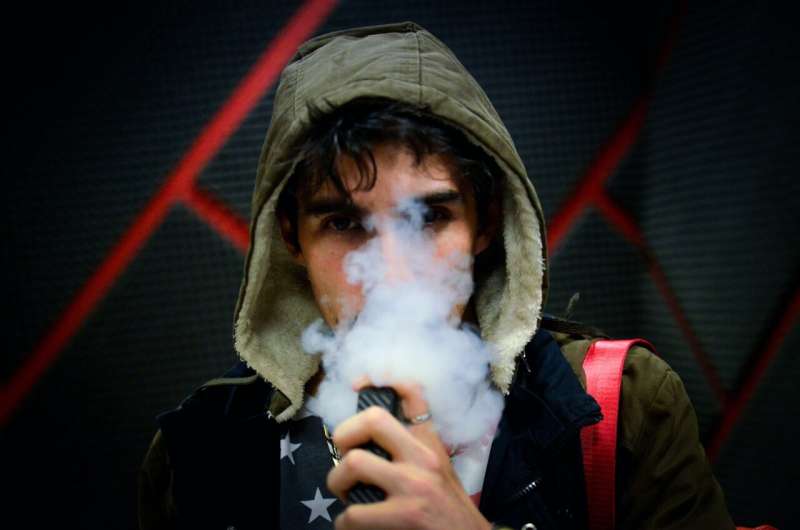Credit: Unsplash/CC0 Public Domain
A new analysis published in JAMA Network Open by investigators at Massachusetts General Hospital (MGH) in collaboration with a retired UCSF professor reveals ongoing and worsening adolescent e-cigarette addiction in the United States.
In the analysis of data from the annual National Youth Tobacco Survey, a nationally-representative survey of middle and high school students in grades 6-12, researchers found that e-cigarette prevalence among youth peaked in 2019 and then declined, but e-cigarette initiation age dropped between 2014 and 2021, and intensity of use and addiction increased after the introduction of protonated nicotine products
Protonated nicotine is created by adding acid to the e-cigarette liquid, which makes the nicotine easier to inhale. Since Juul pioneered protonated nicotine, it has been widely adopted by other e-cigarette companies.
Age at first use of e-cigarettes fell by 1.9 months per year, while age at first use of cigarettes, cigars, and smokeless tobacco did not change significantly. By 2017, e-cigarettes had become the most common first tobacco product used.
E-cigarette nicotine addiction, measured as the odds of use within 5 minutes of waking, an indicator of addiction, increased over time. By 2019 more youth e-cigarette users were using their first tobacco product within 5 minutes of waking than for cigarettes and all other products combined. The percent of sole e-cigarette users who used e-cigarettes within 5 minutes of waking was around 1% through 2017, but then it increased every year, reaching 10.3% youth using their first e-cigarette within 5 minutes of waking by 2021.
Median e-cigarette use also increased from 3-5 days per month in 2014-2018 to 6-9 days per month in 2019-2020 and 10-19 days per month in 2021.
The recently released 2022 National Youth Tobacco Survey data show that 2.55 million adolescents use e-cigarettes and 27.6% of adolescents use e-cigarettes daily. The comparable numbers reported in this paper for 2021 were 2.1 million and 24.7%.
"The increasing intensity of use of modern e-cigarettes highlights the clinical need to address youth addiction to these new high nicotine products over the course of many clinical encounters," says senior author Jonathan P. Winickoff, MD, MPH, a pediatrician at MGH and a professor of pediatrics at Harvard Medical School.
First author Stanton A. Glantz, Ph.D., a retired UCSF professor of medicine, adds, "In addition, stronger regulation including state and local comprehensive bans on the sale of flavored tobacco products such as voting YES on Proposition 31 on California's November ballot, should be implemented."
Abra Jeffers, Ph.D., is an additional coauthor.
More information: Stanton Glantz et al, Nicotine Addiction and Intensity of e-Cigarette Use by Adolescents in the US, 2014 to 2021, JAMA Network Open (2022). DOI: 10.1001/jamanetworkopen.2022.40671
Journal information: JAMA Network Open
Provided by Massachusetts General Hospital
























